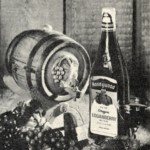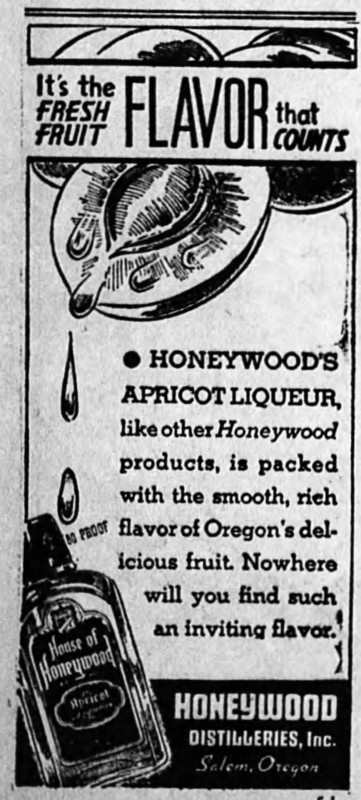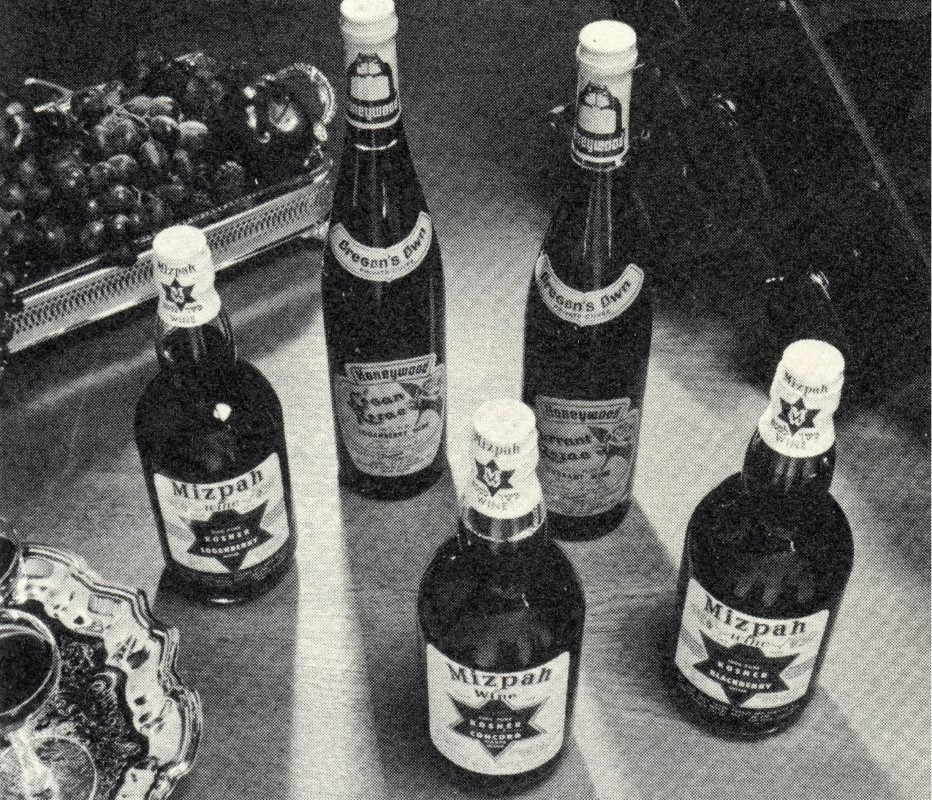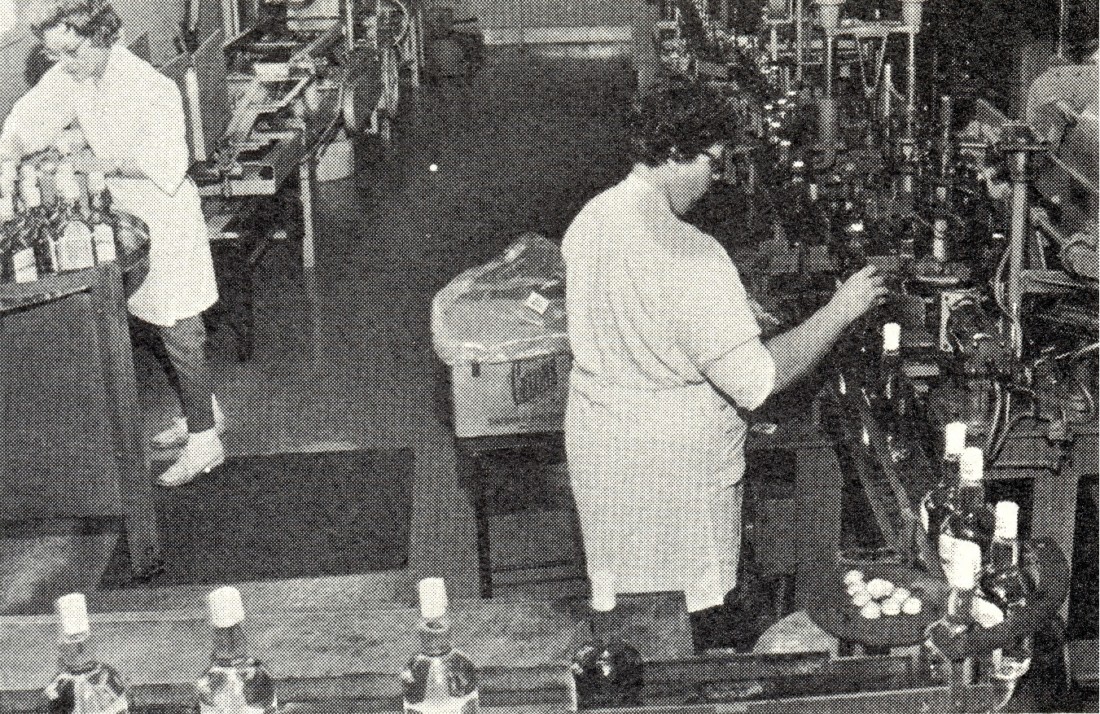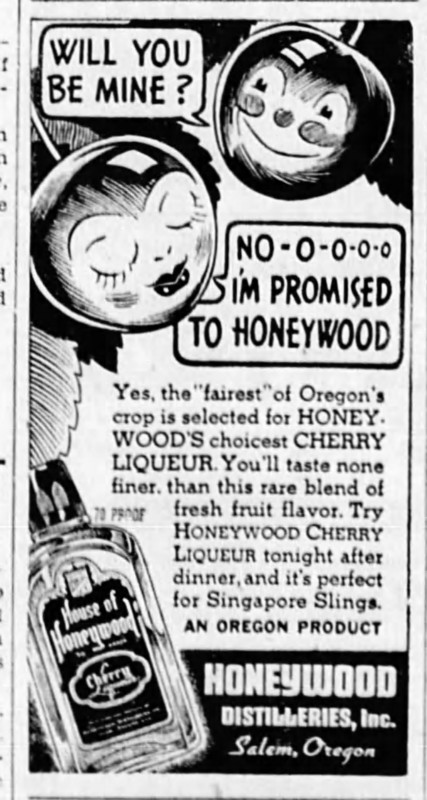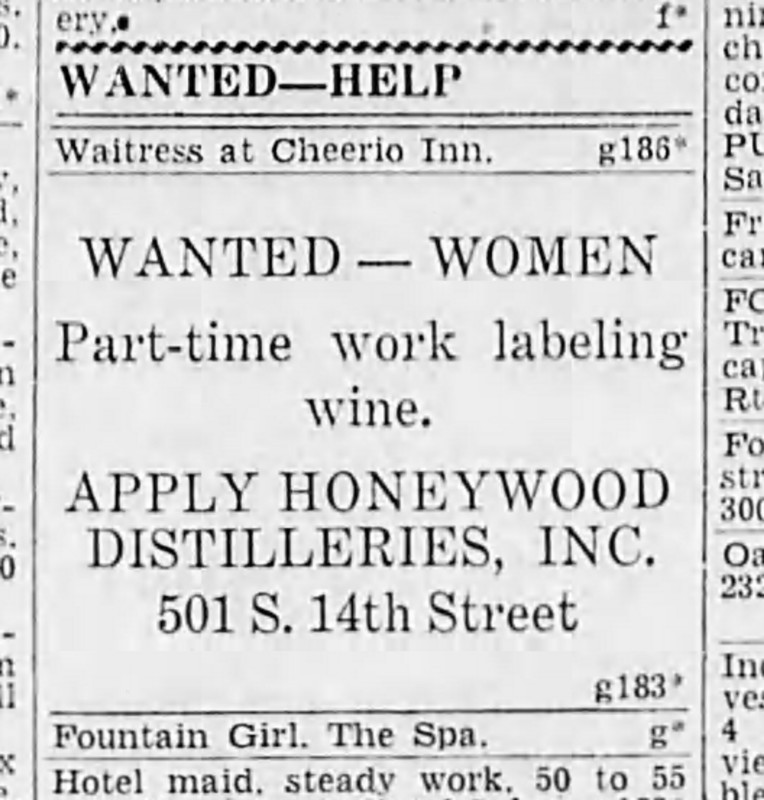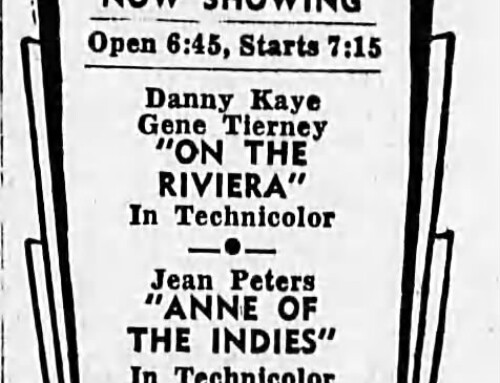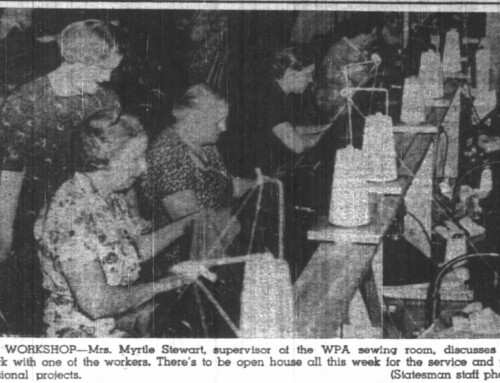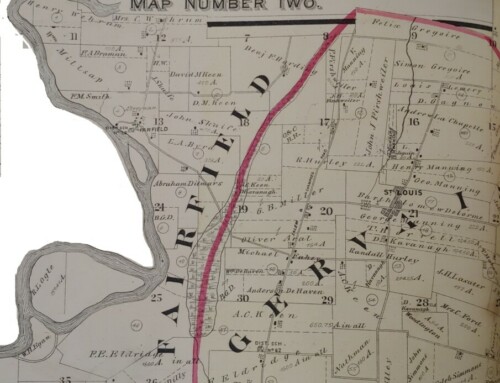For a long time, Salem was Oregon’s Wine Industry
Today wine is a huge industry in the Mid-Willamette Valley – by some estimates bringing 5.61 billion dollars per year into the state economy.[1] It wasn’t that long ago, however, when the state’s largest and only commercial winery was located right here in Salem.[2] For over 80 years, Honeywood, Inc. has been producing wine, quite literally, in our back yard.
Except for a slight blip caused by prohibition, Oregon has had a long tradition of winemaking, fueled by the abundance of fresh local fruit grown here. By the early 1960s, however, the industry had dwindled to a single commercial winery. Despite the limited number of producers, the 1963 state legislature began eyeing a tax increase for beer and wine producers. The proposal was to double the tax on gallons of wine and barrels of beer sold to raise 3 million dollars for the state coffers per biennium. Not surprisingly, Oregon’s only commercial brewery and winery at the time (Blitz Weinhard of Portland and Honeywood, Inc. of Salem) lodged complaints.[3] Take a moment to let that sink in. A mere generation ago, the state now known for its craft beers and premium wines could boast only one brewery and a single winery. Compare that to today when there are over 500 wineries in the Willamette Valley alone!
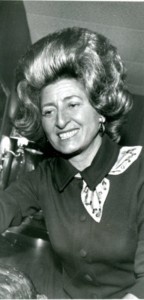
Mary Reinke started with Honeywood Winery in 1943 as a secretary. She became president of the company in 1963. Even after her official retirement in 1974, she continued on in an advisory role. Photo Source: Willamette Heritage Center’s Statesman Journal Mugshot File Collection, 2017.032.
The tax hike didn’t materialize.[4] But it did embolden Honeywood to take the issue even take up the cause and lobby a few months later for a tax break. They pointed out the unfairness of a system where out-of-state firms only had to pay a $25 fee to sell instead their wares instead of a $250 annual license required of the local producer.[5] They didn’t win that session,[6] but got another chance two years later. During hearings, Honeywood company president Mary Reinke, backed up by the Oregon State Horticulture Society and state liquor control administrator, argued that a “reduction is necessary for the [wine] industry’s survival, and that a tax decrease would result in establishment of new wineries.”[7] They convinced the House Tax Committee,[8] although it would still take a few more years before another winery would come onto the scene and Oregon’s modern wine boom would be born.
Honeywood’s history dates back to 1934. In the aftermath of prohibition being overturned, John Esten Wood spent the summer of 1934 scouting out locations across Oregon for a new distillery. His business model was to transform the abundant fruit grown in the state into “brandies, wines and fruit concentrates.” He picked Salem over candidates like Hood River and the Dalles because of the abundance and variety of fruits available. It didn’t hurt that Salem’s eight canneries could provide leftovers or fruits not of a quality good for canning and packing at very discounted prices. So, with a capital stock of $50,000, articles of incorporation for Columbia Distilleries, Inc. were filed in December of 1934.[9]
Wood was not perhaps the most obvious candidate for starting a new wine industry in Oregon. Born in Missouri in 1891, his resume up until that point consisted of a stint teaching,[10]about a decade in the U.S. Navy where he ended up as a paymaster for a navy yard in Virginia[11], and the administration of a business school in the Portland area.[12] In spite of his lack of experience, he would serve as a company leader until his death in 1955.[13]
The new company had many hoops to jump through, including gaining permission from the federal alcohol control administration in Washington, D.C. A telegram from then senator Charles L. McNary brought news of the approval of the new distillery in March of 1935.[14] The original plant was planned for north of Salem. It is unclear if it was ever developed, but just a year later a building permit was issued to the company for a facility at 501 S. 14th Street.[15] Although met with a petition of protest from local neighbors,[16] the facility ended up there — located about where the entrance gate to the TIUA parking lot sits today.
Work continued on the new plant and the company recruited a very recent German immigrant named C. Herman Lowenberg to oversee production[17]and serve as “brewmaster.”[18] Despite plentiful news reports of these advances, there is no real evidence that anything was being produced in the plant itself. This may have led to the renaming and reorganization that took place before the facility – now known as “Honeywood Distillery, Inc.” — was granted a license by the Oregon Liquor Control Commission in in June of 1937.[19] By 1938, R.J. Honeywood and J.E. Wood were serving as the President and Vice president of the company, respectively.[20] The name, Woods would relate in a 1938 interview with the Evening Herald of Klamath Falls, came from: “more than a combination of their names…The first ‘house of Honeywood’ was an inn in the [1768] Oliver Goldsmith play, The Good Natured Man.”[21]
With a “100,000 gallon capacity winery and a 3000 gallon liqueur manufactury[sic]” the company was the “largest manufacture of berry wines in the northwest” within its first year of operation.[22] Early products included blackberry, apple and loganberry wine; apricot, cherry and plum brandies, and sloe and orange gin.[23] All of the fruit was reportedly sourced in within the state,[24] although the notion of Oregon-grown oranges make this claim a little suspect. Distribution stretched from Hawaii to Montana.[25]
Despite the scale of production, many in Salem didn’t even know the plant existed. Ag reporter Lillie Marsden started out a 1951 article declaring: “If you are like me, you didn’t know alcohol was made in Salem. I didn’t until I began investigating where some of the extra fruit from Salem area went to… I also learned that all fine wines do not come from southern France and Italy, or even from California. Over 100 carloads made right in Salem are distributed in 20 different states in the union. This isn’t even a new industry.”[26] In addition to fruit and table wines, Honeywood produced extracts for flavorings and perfume.[27] They also produced kosher wines and brandies reaching markets in “Philadelphia, Baltimore, New York and Boston.”[28] In later years Rabbi Yonah Gellar of Portland supervised the production of Kosher wines at Honeywood, which were produced from concord grapes grown specifically for it in orchards in Gresham, Oregon and Sunnyside, Washington.[29] Cooking wines, and wine based jams and jellies were also produced and sold in the company’s gift store.[30]
In 1980, the Gallick family – who had bought into the company in 1973[31] – made the move from Minnesota to take over operations. Family members continue to operate the facility today.[32] In 1990, the plant was moved from 14th Street, a few blocks south to 1350 Hines Street where you can visit them today.[33]
This article was written by Kylie Pine for the December 15, 2019 edition of the Statesman Journal newspaper. It is reproduced here with citations for reference purposes.
Sources:
[1] This figure is quoted in a 2019 industry overview published in the Capital Press. See McClain, Sierra Dawn. “Grapes of Change: How the win Industry Has Transformed Oregon’s Economy.” Capital Press. 15 Aug 2019. The article quotes a 2016 Study done by Full Glass Research (an independent marketing consultancy with a specialty in food and beverage research. http://fullglassresearch.com/).
[2] Statement backed up by newspaper coverage 1963-1965 at least. See for example. Ward, Williard. “Salem-Made Wines are Sold in Distant Parts of Country.” Oregon Statesman 14 Oct 1963 pg 14 for example. More examples in text.
[3] “Beer, Wine Tax Boosts Opposed.” Albany Democrat Herald. 26 March 1963, pg 2; “Beer, Wine Makers Buck Tax Increase.” Oregon Statesman. 26 Mar 1963, pg 3. “Committee Told Tax Boost May Break State’s Lone Winery.” Klamath Herald. 27 Marc 1963 pg 9.
[4] I don’t have a news article about its failing to pass the committee, but it should be noted that by May 1963 and then again in 1965 (see “Winery Tax Break Voted.” Capital Journal. 15 Mar 1965), the tax number quoted was 23 cents per gallon. The same indicating no increase had occurred.
[5] “Tax Break Bumped for Salem Winery.” Capital Journal. 9 May 1963 pg 7; “Wine Tax Cut is Defeated.” Capital Journal. 15 May 1963, pg 9.
[6] Wine Tax Cut is Defeated. Capital Journal 15 May 1963 pg 9.
[7] “Winemaker Asks Cut in Taxes.” Capital Journal. 11 March 1965 pg 14.
[8] Winery Tax Break Voted. Capital Journal 15 March 1965 pg 11; “License for Lenders” Capital Journal 17 Marc 1965 pg 1
[9] “Articles Filed for Distillery Plant to make beverages here.” Capital Journal. 8 Dec 1934, pp 1, 7.
[10] See also Obituary 26 Nov 1955 pg 7 “Wood Formed Largest State Winery Here.”
[11] See listing in 1920 US Census, Craddock, Norfolk, Virginia, where he is listed as Paymaster, Navy Yard. See also Obituary 26 Nov 1955 pg 7 “Wood Formed Largest State Winery Here.”
[12] See also Obituary 26 Nov 1955 pg 7 “Wood Formed Largest State Winery Here.” Also, 1930 US Ardenwald, Clackamas, Oregon.
[13] “John E. Wood, Head of Winery, Dies in SF” Medford Mail Tribune, 27 Nov 1955 pg 15; Wood formed largest State Winery Here.” Oregon Statesman 26 Nov 1955 pg 5.
[14] “Permit Granted for Distillery.” Oregon Statesman 8 Mar 1935 pg 13; “Permit Granted for Local Plant to Make Fruit Juice Brandies.” Capital Journal. 8 Mar 1935 pg 1, 7.
[15] “Distillery to Utilize Local Fruit Planned.” Capital Journal. 28 May 1936 pg 1; “Permit Granted for Local Plant to Make Fruit Juice Brandies.” Capital Journal. 8 Mar 1935 pg 1, 7. “Building Permit for New Distillery.” Capital Journal. 6 Jul 1936, pg 7. “Permit to Build Distillery Taken.” Oregon Statesman. 4 Jul 1936, pg 5. “Fruit Distillery Is Planned Here.” Oregon Statesman. 29 May 1936 pg 2
[16] “Distillery as Neighbor Protested by Residents.” Oregon Statesman. 2 Jun 1936, pg 1. “Distillery Plant Held Within Right.” Capital Journal. 16 Jun 1936 pg 14
[17] “Lowenburg with Distillery Here.” Capital Journal. 9 April 1937 pg 14.
[18] “Story Related of Salem Distillery.” Evening Herald (Klamath Falls). 7 Nov 1938 pg 13.
[19] “License Granted Salem Distillery.” Oregon Statesman 30 Jul 1937 pg 14; “Beer license Given Swartz over Protest.” Capital Journal 30 Jul 1937 pg 14.
[20] “Story Related of Salem Distillery.” Evening Herald (Klamath Falls). 7 Nov 1938 pg 13.
[21] “Story Related of Salem Distillery.” Evening Herald (Klamath Falls). 7 Nov 1938 pg 13.
[22] “Story Related of Salem Distillery.” Evening Herald (Klamath Falls). 7 Nov 1938 pg 13.
[23] “Distillery adds to Factory.” Capital Journal 6 Oct 1938 pg 7.
[24] “Story Related of Salem Distillery.” Evening Herald (Klamath Falls). 7 Nov 1938 pg 13.
[25] “Distillery Adds to factory.” Capital Journal. 6 Oct 1938 pg 7. “The product is now sold throughout Oregon and in California, Utah, Montana and Hawaii. Additional territory is continually being added byt eh company.
[26] Madsen, Lillie L. Wine Made in Salem Finds Broad Market. Oregon Statesman 11 Oct 1951 pg 14
[27] Madsen, Lillie L. Wine Made in Salem Finds Broad Market. Oregon Statesman 11 Oct 1951 pg 14
[28] Madsen, Lillie L. Wine Made in Salem Finds Broad Market. Oregon Statesman 11 Oct 1951 pg 14
[29] Ward, Williard. “Salem-Made Wines are Sold in Distant Parts of Country.” Oregon Statesman 14 Oct 1963 pg 14 (section 2)
[30] See advertising brochure2017.075.0043 WHC Collections.
[31] “3 men Form firm to Buy Honeywood Winery.” Oregon Statesman. 1 Jan 1974 pg 5.
[32] Panichkul, Victor. “Honeywood Winery celebrates 80 years. Statesman Journal. 23 Nov 2014 pg E4
[33] Advertisement. Statesman Journal. 19 May 1990 pg 69. Rediscover Honeywood! Rediscover Oregon’s oldest winery…at our brand new location…1350 Hines St SE, Salem.



